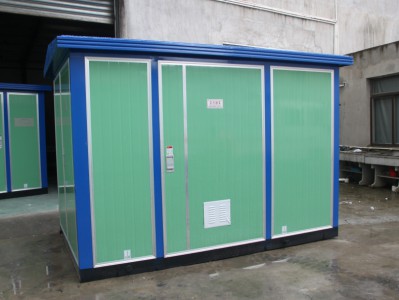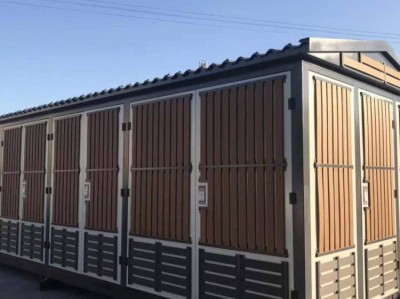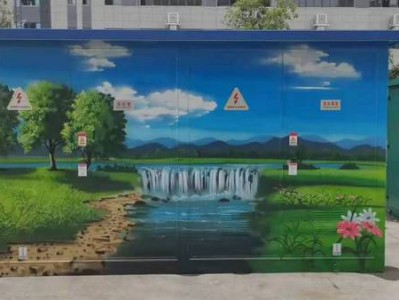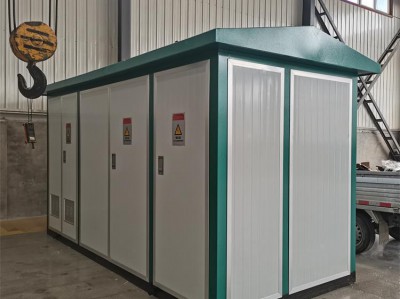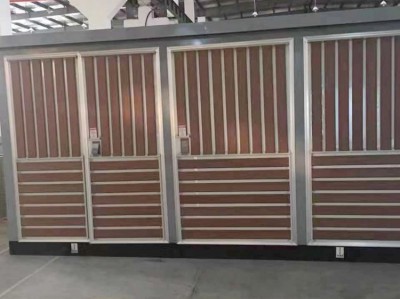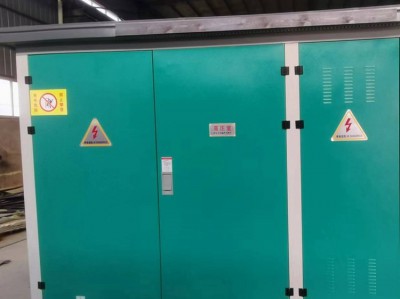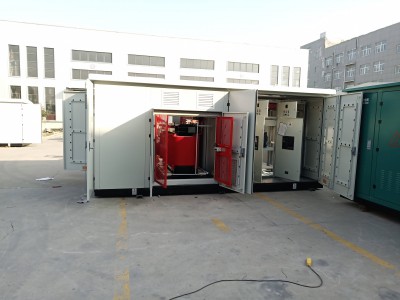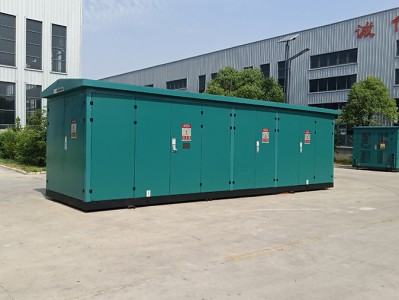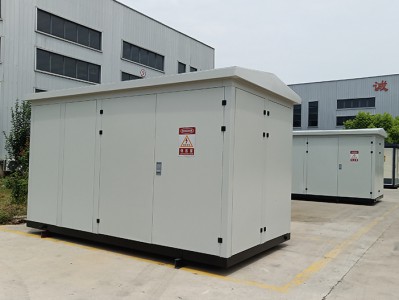European-style box-type substations
Product description
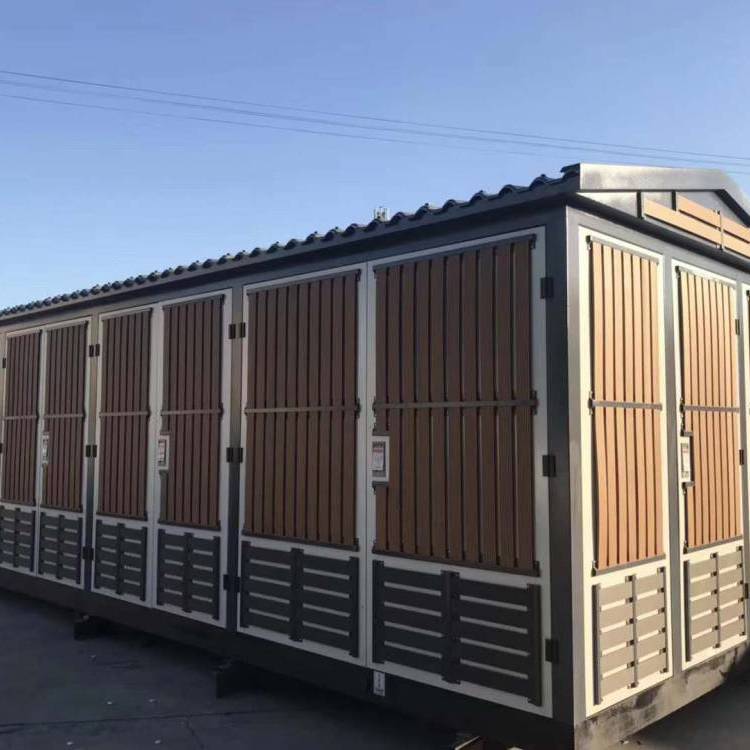 The following is a detailed introduction to European-style box-type substations:
The following is a detailed introduction to European-style box-type substations:
### I. Structural Features
1. **Modular structure**
- European-style box-type substations combine high-voltage switchgear, transformers, low-voltage switchgear and other equipment in a closed box according to a certain wiring scheme. This modular structure has a compact layout and clear functional partitions. For example, high-voltage switchgear is responsible for the control and protection on the high-voltage side, the transformer performs voltage transformation, and the low-voltage switchgear distributes and controls the electric energy on the low-voltage side.
- The box body usually adopts a metal shell, which has high strength and good sealing performance. The protection level can generally reach IP33 and above, which can effectively resist the invasion of external environmental factors such as dust and rain and ensure the reliable operation of internal equipment in outdoor environments.
2. **Transformer features**
- Oil-immersed transformers or dry-type transformers can be used. Oil-immersed transformers have good heat dissipation performance and low cost, and are suitable for occasions where cost is relatively sensitive and environmental conditions permit. Dry-type transformers have the advantages of fire prevention, explosion prevention, and convenient maintenance, and are widely used in places with high safety and environmental protection requirements (such as densely populated areas and indoor installations).
3. **Heat dissipation design**
- For European-style box-type substations using oil-immersed transformers, there are various heat dissipation methods. Common ones are natural oil circulation air-cooled heat dissipation, which dissipates the heat inside the transformer through radiators. Some box-type substations are also equipped with intelligent temperature control systems, which can automatically control the start and stop of cooling fans according to the oil temperature of the transformer, improving heat dissipation efficiency while reducing energy consumption.
- Dry-type transformers mainly rely on natural convection of air or forced air cooling for heat dissipation. In design, the layout of the air channels inside the box-type substation is reasonable to ensure good ventilation effects and maintain the transformer within the normal working temperature range.
### II. Technical Parameters
1. **Rated voltage**
- The common rated voltages on the high-voltage side are 10kV, 35kV, etc., to meet the access requirements of distribution networks of different voltage levels. The rated voltage on the low-voltage side is generally 0.4kV, mainly to meet the power consumption requirements of terminal users such as civilians, commerce, and small industries.
2. **Rated capacity**
- The rated capacity range is wide, ranging from several hundred kVA (such as 315kVA) to several thousand kVA (such as 2000kVA). European-style box-type substations with appropriate capacities can be selected according to the actual power consumption load. Smaller-capacity equipment can be selected for small communities and commercial blocks, while larger-capacity European-style box-type substations may be needed for large industrial enterprises or commercial areas.
3. **Connection group label**
- Common connection group labels include Dyn11, etc. The Dyn11 connection group label has good performance in suppressing third harmonics, improving power quality, and dealing with asymmetric loads, and can ensure stable voltage output when the load changes.
4. **Short-circuit impedance**
- The short-circuit impedance is usually between 4% and 6%. A reasonable short-circuit impedance value can effectively limit the size of the short-circuit current when a short-circuit fault occurs, protecting the transformer itself and other electrical equipment in the box-type substation from being impacted by excessive short-circuit current. At the same time, it also helps to achieve a good match between the transformer and the power grid and load during normal operation, ensuring the stable transmission and distribution of electric energy.
III. Environmental Requirements for Use
1. **Temperature range**
- Generally, it is required to work normally at an ambient temperature of -25℃ - +40℃. In a low-temperature environment, for oil-immersed transformers, attention should be paid to the freezing point of the oil and the starting performance of the equipment; for dry-type transformers, the performance changes of insulation materials should be considered. In a high-temperature environment, regardless of the type of transformer, it is necessary to ensure that the heat dissipation system can work effectively to prevent the equipment from being damaged or having degraded performance due to overheating.
2. **Humidity requirements**
- The relative humidity is usually required not to exceed 90% (monthly average) and 95% (daily average). A high-humidity environment may affect the insulation performance of the equipment. In areas with high humidity (such as coastal areas), moisture-proof measures need to be taken, such as strengthening the sealing of the box body and setting desiccants in the box body to prevent electrical equipment from malfunctioning due to moisture.
3. **Altitude limit**
- Generally, the altitude does not exceed 1000m. When the altitude exceeds this value, due to factors such as reduced atmospheric pressure and thin air, the insulation performance and heat dissipation performance of the equipment will be affected. When used in high-altitude areas, special design may be required for the equipment, such as increasing the insulation distance and strengthening heat dissipation measures to ensure the normal operation of the equipment.
4. **Adaptation to pollution level**
- According to different usage areas, different pollution levels need to be adapted. In areas with a high pollution level (such as areas with serious industrial pollution or more dust), the external insulation surface of the box-type substation is prone to accumulate dirt and reduce insulation performance. To deal with this situation, measures such as increasing the creepage distance, using anti-pollution insulators or performing regular cleaning and maintenance can be taken to ensure the normal operation of the equipment.
IV. Application Scenarios
1. **Urban residential areas**
- In urban residential areas, European-style box-type substations are widely used as power distribution equipment. It can convert the high-voltage electricity from the urban distribution network into the low-voltage electricity required for residents' lives and provide stable and reliable power supply for various electrical appliances in residences (such as lighting, televisions, refrigerators, etc.) and public facilities in the community (such as street lights, elevators, fire-fighting equipment, etc.). Due to its neat appearance, small footprint and low noise, it is suitable for installation in a suitable location in the community without causing significant interference to residents' lives.
2. **Commercial centers and office buildings**
- For places such as commercial centers and office buildings, European-style box-type substations can meet their large power consumption needs. It can provide sufficient power for the lighting system, air conditioning system, elevators, escalators, cashier equipment, etc. of commercial centers and office equipment, air conditioning, elevators, etc. in office buildings. Moreover, European-style box-type substations have good expandability and can be expanded in capacity or upgraded in function according to the development of commercial or office places.
3. **Industrial parks**
- In industrial parks, European-style box-type substations can provide power support for various industrial enterprises. Whether it is a small processing enterprise or a large manufacturing enterprise, European-style box-type substations can distribute electric energy of appropriate voltage levels to various production links according to the power consumption characteristics of enterprises, such as machine tools, cranes, ventilation equipment, etc. in production workshops, ensuring the normal production and operation of enterprises.
4. **Temporary power consumption projects**
- In some temporary power consumption projects (such as construction sites, temporary event venues, etc.), European-style box-type substations also have great advantages. It can be quickly installed and put into use to provide temporary power supply for various equipment in temporary projects (such as tower cranes, mixers, welding machines, etc. on construction sites, stage equipment, audio equipment, lighting equipment, etc. in temporary event venues), meeting the short-term power consumption needs of projects.

